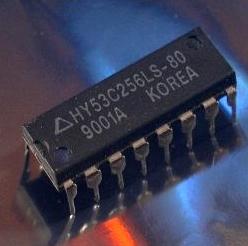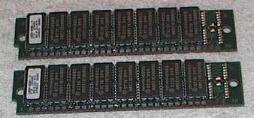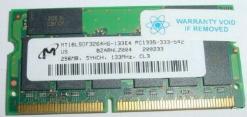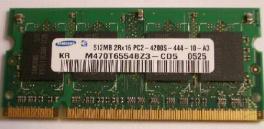Memories by Vaughn Hemingway
What is Memory?
Memory is your computers chawkboard. Without memory our human race would become vegitables.
Your computer needs memory too and the more you have, the faster and smarter your computer will be.
Up to a point. Once you have enough RAM to satisfy its cravings, adding more will not make it faster
until you add larger more powerful programs or abuse your computer with useless TSRS.

DIPs
Before we had simms we used to have to install 16 to 18 individual matched chips
in our 8088 or 286 just to make the machine work. There were 8 in each bank and a parity.
The whole machine would only hold a total of 1MB maximum and people used to say you will
never actually use a whole Megabyte of memory. Boy were they wrong!

30 Pin Simms
Came in sizes of
256KB
1MB
4MB rare
and 16MB extremely rare
and all operated at around 60-100ns (about 12MHz)
they were 8 or 9 bits wide and required pairs for 286 and 386sx
and groups of 4 for 386DX and 486 computers

72 PIN Simms
These were used in early Pentiums and were 32 to 36 bits wide. Pentiums required them to be matched in Pairs while 486's only needed one.
These Came in sizes of
1MB very rare
2MB rare
4MB
8MB
16MB
32MB
64MB rare

168 PIN Dimms
These are actually 64 bits wide and increased the speed of RAM from 12MHz to over 100Mhz greatly increasing our computing speed.
Came in sizes from 16MB - 512MB and speeds of
12MHz EDO
66MHz PC66
100MHz PC100
133MHz PC133

184Pin RDRAM or RAMBUS
This was a serial mistake of Intel. It worked at speeds of 800 - 1066 MHz
on a very narrow bus making those speeds comparable to DDR1600(200)
and DDR 2100(266) respectively. It's popularity was very short.
These Came in sizes from 128MB - 512MB and needed to be deployed in pairs.
800MHz RAMBUS is like PC1600(200) when compared to DDR
1066MHz RAMBUS is like PC2100(266) when compared to DDR

184Pin DDR
DDR stands for Double Data Rate. It works on the up clock tick as well
as the down clock tick which makes it inheritantly twice as fast as
168 pin dimms.
These Come in sizes from 128MB - 2GB and have speeds of
100MHz DDR but more commonly known as 200 or PC1600
133MHz DDR but more commonly known as 266 or PC2100
166MHz DDR but more commonly known as 333 or PC2700
200MHz DDR but more commonly known as 400 or PC3200
216MHz DDR but more commonly known as 433 or PC3500
250MHz DDR but more commonly known as 500 or PC4000

240 Pin DDR2
These Come in sizes from 256MB - 4GB and have speeds of
200MHz DDR2 but more commonly known as 400 or PC2-3200
266MHz DDR2 but more commonly known as 533 or PC4300
333MHz DDR2 but more commonly known as 667 or PC5400
400MHz DDR2 but more commonly known as 800 or PC6400
500MHz DDR2 but more commonly known as 1000 or PC8000

DDR3
These Come in sizes from 1B - 8GB and have speeds of
DDR3 800 or PC6400
DDR3 1066 or PC8500
DDR3 1333 or PC10600
DDR3 1600 or PC12400
Notebook SoDimm
Because of the generally proprietarian nature of Notebook parts,
Laptop RAM was only standardized redcently. Sodimm PC100, PC133,
DDR266 DDR333 DDR400 and PC2 are now available.

SoDimm PC133

200 Pin SoDimm DDR and DDR2
For great prices on RAM please check out our price list by clicking here.











